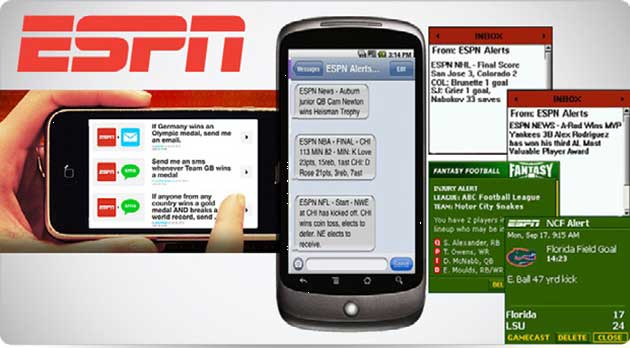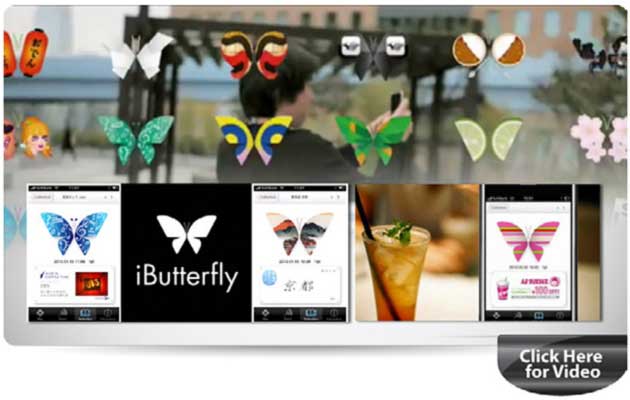Part 1 of this series covered how a constantly connected mobile planet is fueling unprecedented shifts in behavior and facilitating a massive set of marketing opportunities.
For today's marketers, the most stunning implication is the incredible innovation moment that mobile affords them across the entire marketing ecosystem. That complex system spans the ways that audiences engage with brands; the channels through which brands are sold; the portfolio of products developed to capture customers; the set of experiences that comprise the customer journey; and the levels of overall value that differentiates brands.
And that leads me to the first of five innovation strategies that I'll explore in this series: innovating brand engagement through mobile.
Without question, winning in today's crowded, chaotic marketplace means attracting and maintaining high levels of brand engagement. Mobile is rife with newfound potential for bolstering audience engagement, proffering many a welcomed alternative to the status quo. And if ever a marketing component were in need of innovation, most assuredly it's brand engagement.
The battle for attention—and, in turn, engagement—has escalated into an all-out war by marketers... and their target audiences are its victims:
- TV advertisements literally scream at us, (they are at least 30% louder than the shows they interrupt), while the programs themselves are packed with product placements.
- Our online social networks connect us to our friends while simultaneously connecting us to more marketing messages.
- Popular websites bombard our computer screens with banner ads, while a battery of pop-up surveys place a formidable barrier between us and the content we seek.
- Our physical mailboxes are overflowing with junk mail... but that's nothing compared with the advertising assault occurring within our email inboxes.
But does the endless barrage of marketing salvos truly increase engagement? More to the point: within this cacophony of companies competing to out-shout one another... where, oh where, is the innovation?
Decidedly, to create truly engaging programs, what is needed is not more of these aggressive tactics but an altogether different mindset from marketers. Mobile facilitates new thinking because mobile's capabilities and tools enable marketers to transform why, when, where, and how audiences engage with their brands.
To innovate brand engagement through mobile, marketers must identify precisely what it is in relation to their brands that is most meaningful to their audiences; they must then apply mobile's capabilities and tools to deliver that value to audiences in new ways.
Let's look at examples of smart brands using SMS alerts, augmented reality, and mobile websites to innovate how they are engaging their target audiences through mobile.
ESPN: Wielding Mobile to Engage Audiences Through Personalized Content on Their Primary Content Devices
Look at what cable TV sports network ESPN has activated to extend engagement of the ESPN brand beyond the TV screen to the anytime-anywhere mobile environment.
ESPN's audiences value sporting content and seek to consume that content when it airs. But viewers are not always at their TV screens (or their computer screens) when their preferred sporting events are broadcast or when sport-related developments take place. They are, however, always connected to their mobile devices.
The beauty of ESPN's overwhelmingly successful SMS program is that it provides target audiences the ability to receive a stream of real-time alerts that they can personalize to their specific sporting preferences.

By providing subscribers with a mobile feed of personalized, real-time sporting content—as broad as subscribing to an entire NFL season, or as specific as following just one team, or just one game—ESPN has not only used mobile to innovate how audiences engage with their brand but also extended brand engagement from the TV screen to the anytime-anywhere mobile screen.
Now, sporting content follows audiences; now, ESPN is always with them in ways that enrich their lives and keep them constantly engaged with the brand.
ESPN's mobile innovation moment:
- Before mobile? Audiences engaged with ESPN's content through their TVs.
- After innovation? Audiences now engage with ESPN's content in a new, personalized way through the real-time medium of mobile—and the ESPN brand is always with them.
iButterfly: Wielding Mobile to Transform Advertising From a Passive Act Into an Engaging Activity
Discounts and coupons have long been a popular marketing tactic, but never a truly engaging activity: Readers or viewers see an advertised discount; if the promoted incentive is valuable to them, they might redeem the offer. The engagement level, for all intents and purposes, is fleeting—which is why new campaigns, touting new incentives, must be launched every single week, month, and quarter to capture audience attention.
Enter "iButterfly," a most unusual mobile advertising platform created by Dentsu, the leading advertising agency in Japan:
With it, couponing has not only moved to mobile but also morphed from a passive act into a dynamic activity.
Using a mobile app with augmented reality functionality, consumers can see virtual butterflies all around them, and they can "catch" the butterflies by using their smartphones as makeshift butterfly nets. Compellingly, different species of virtual butterflies can be caught in various locations—different cities or different shopping venues—across the country. Consumers can redeem each butterfly they catch, receiving commercial gifts or promotional offers (for technology, food, coffee, and apparel).
Furthermore, consumers are encouraged to collect different types of virtual butterflies in their virtual albums, and swap with their friends to fully populate their virtual butterfly collections.
At its core, iButterfly is an advertising engine, but the innovation lies in how Dentsu applied mobile to transform passive, incentive-based advertising into an engaging, exciting activity for audiences.
iButterfly's mobile innovation moment:
- Before mobile? Audiences passively viewed advertisements promoting discounts and incentives.
- After innovation? Audiences actively seek out and participate with advertising in a whole new way—because mobile transforms advertising into an engaging game for them to play.
Carling Black Label Beer: Wielding Mobile to Give Audiences a New Way to Engage With Events
Carling Black Label, South Africa's leading beer, engaged its audiences via soccer—an activity that was meaningful to its customer base and had strong synergies with the company's core product, as fans the world over enjoy beer while watching their favorite sport.
Carling Black Label noticed that fans supported their favorite teams but largely disagreed with the team's coaching choices. So Carling Black Label used mobile to engage its audience in a new way: a campaign that let fans "Be the Coach" for The Carling Black Label Cup:
Unique codes on the bottle tops of Carling Black Label beer gave fans access to the promotion. Audiences could use mobile phones during the sweeping seven-week campaign to make coaching decisions via a mobile-optimized site—including picking the players for their team and making live substitutions on the day of the game.
The winning play belongs to Carling Black Label for engaging its fans by empowering them to participate in their favorite pastime in an entirely new way.
Carling Black Label Beer's mobile innovation moment:
- Before mobile? Audiences enjoyed Carling Black Label Beer while watching soccer events.
- After innovation? Audiences participated in the soccer event in an entirely new way—because through mobile Carling Black Label Beer empowered them be a core part of the event (and increased their levels of engagement).
Architecting Innovation: Wielding Mobile to Transform How Audiences Engage With Brands
Mobile affords marketers a wealth of new opportunities to develop much deeper and far more engaging brand experiences for their target audiences. Though transformative, mobile is just the technology, however; the innovation lies in how companies strategically wield this remarkable medium.
So the key question for marketers seeking to innovate brand engagement is this: How can you wield mobile's capabilities and tools to transform why, when, where, and how you engage audiences around your brands?
- Could you engage your audience by reimagining your content, as ESPN has done by turning its broadcast sporting content into personalized, real-time SMS feeds for viewers?
- Can you engage your audience around their passions, as Carling Black Label Beer has done by enabling fans to progress from being viewers to becoming participants via a mobile website?
- Or might you engage your audiences through mobile by turning passive advertising into a dynamic activity, as iButterfly has done by unleashing virtual butterflies that fill the air across all of Japan?
Many questions await you—but much innovation, too.
Next week, we'll continue to explore how to wield mobile to innovate more of the marketing ecosystem in Part 3 of this series: "Mobile Innovation Strategy No. 2: Innovating Sales Channels Through Mobile." You'll discover how to wield mobile's capabilities and tools to create new sales channels, trigger new sales at the point of purchase, and transform existing places and activities into entirely new sales channels.






